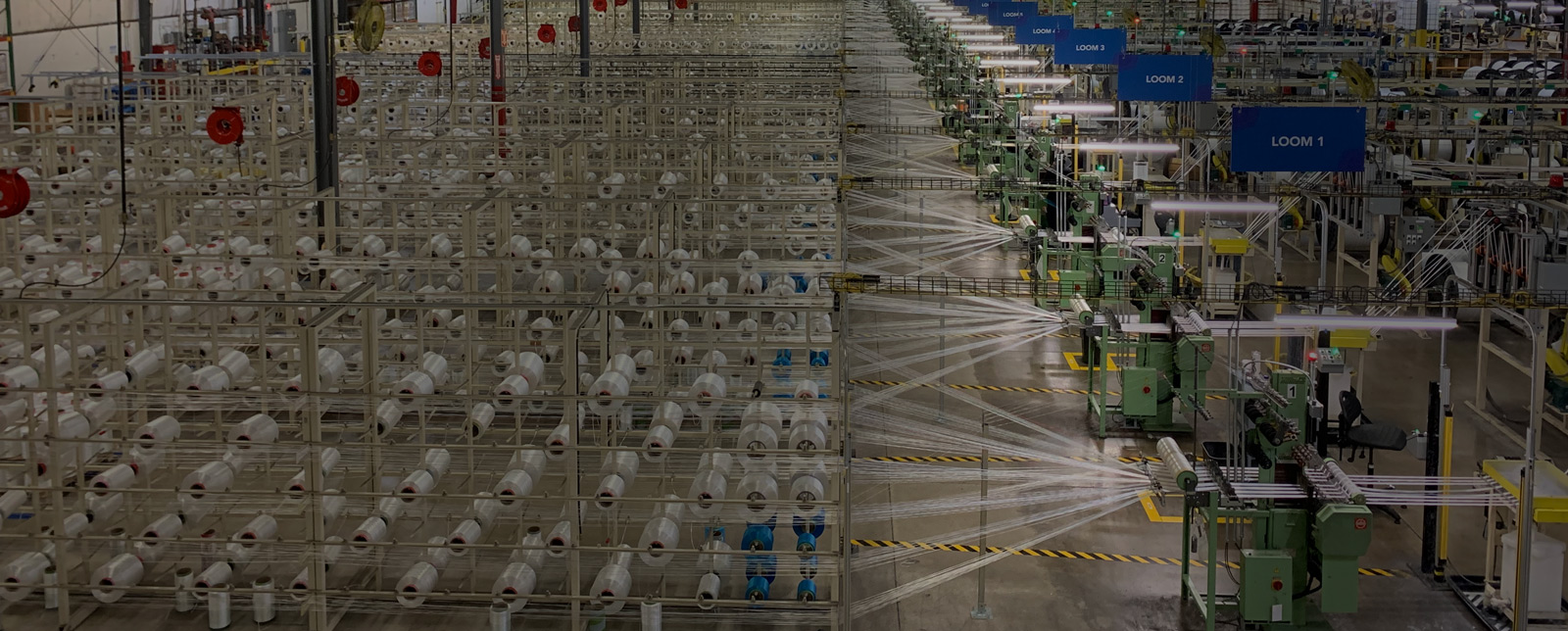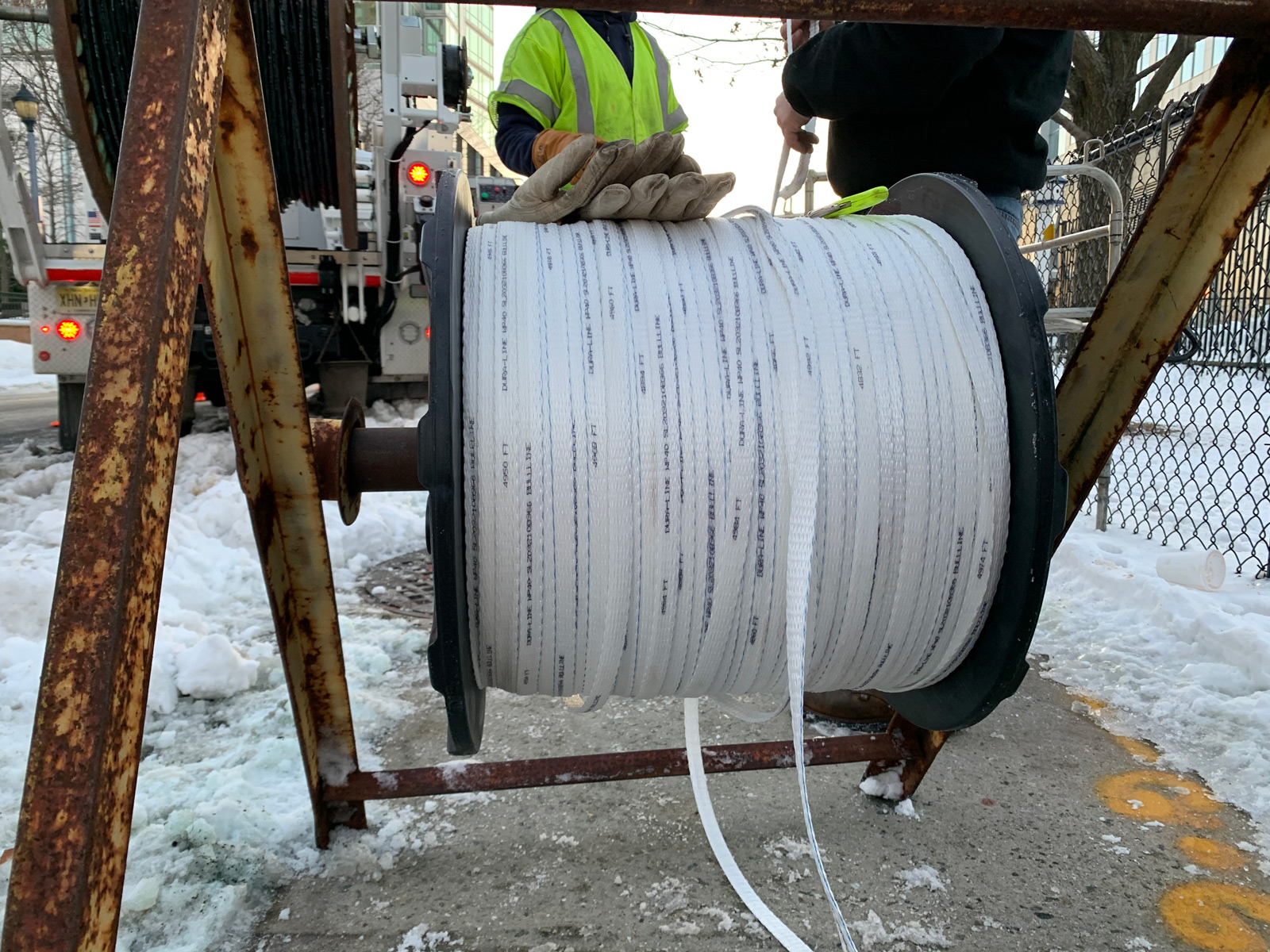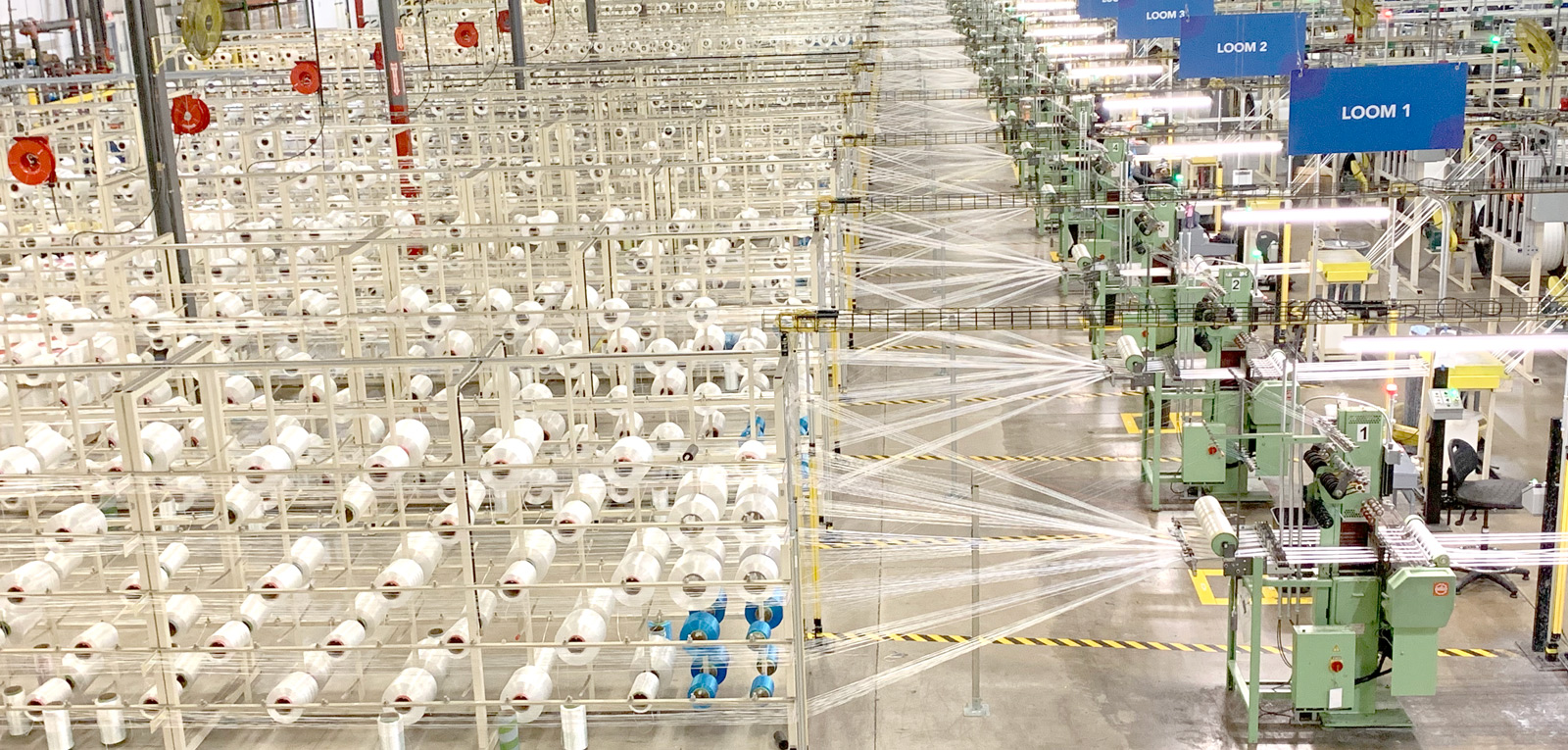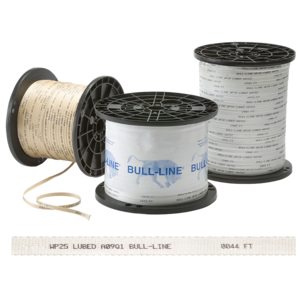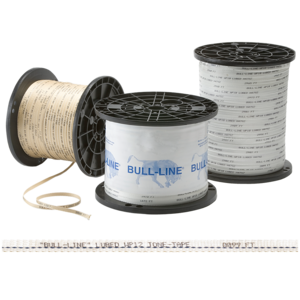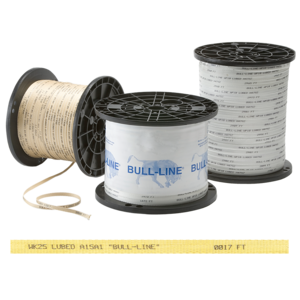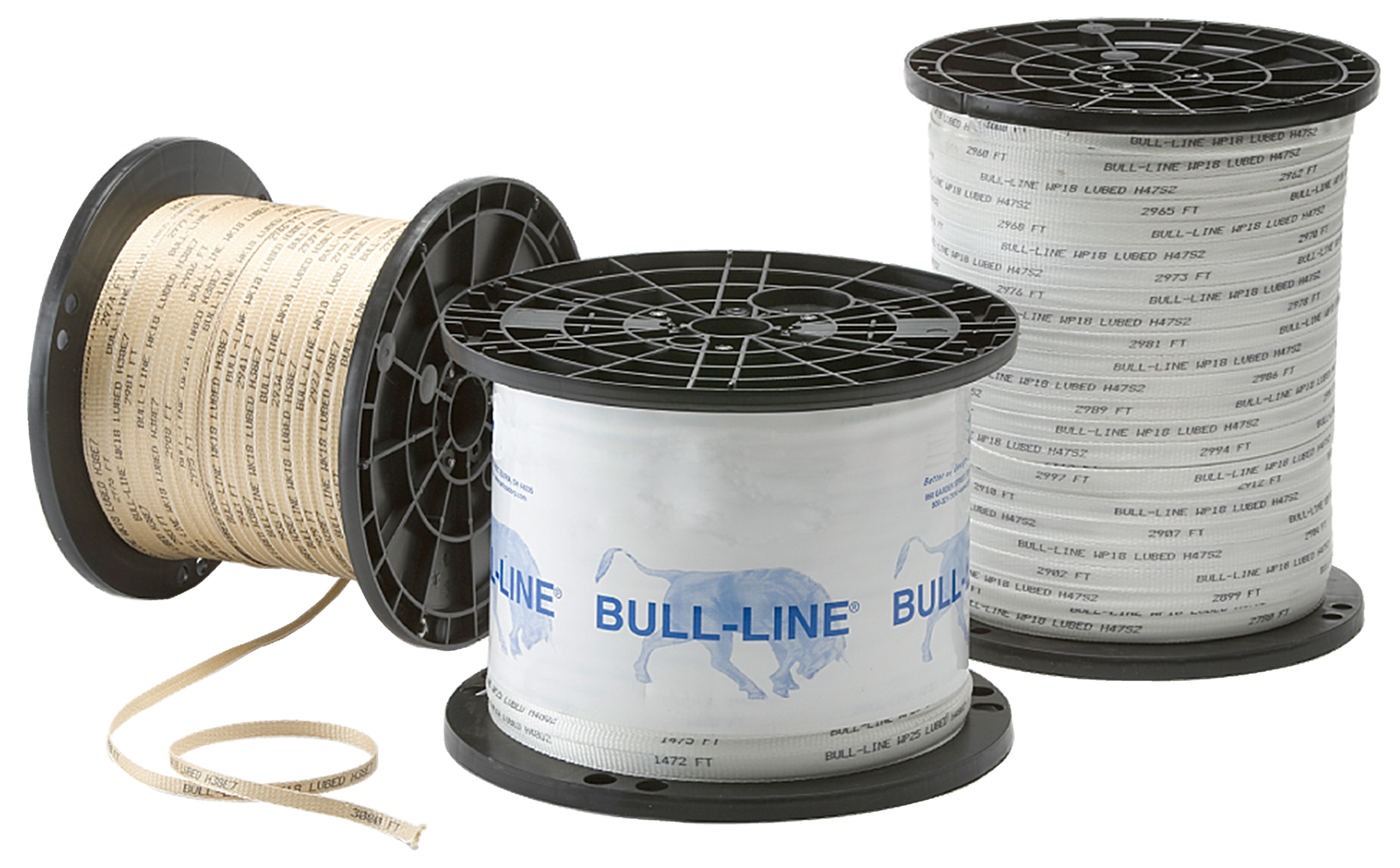While it’s true that the concept is rudimentary, dig a little deeper and you’ll discover a level of engineering and versatility that sets this essential tool apart from other pulling media.
Here are four reasons why there’s more to pull tape than you think:
1. It’s more efficient than traditional pull rope
Friction is a primary concern in cable pulling. Friction builds as the pull line or cable moves against the inner wall of the conduit – particularly at bends or turns. A by-product of friction is heat, which can cause softening of the pull line and/or cable jacket, microfusion with the conduit wall, and even conduit burn-through.
Traditional polypropylene pull rope (like the one below) is particularly susceptible to these issues due to its relatively low melting point and tendency to adhere to common conduit materials like polyethylene and PVC. It also has relatively low abrasion resistance and can even cut itself when knotted.
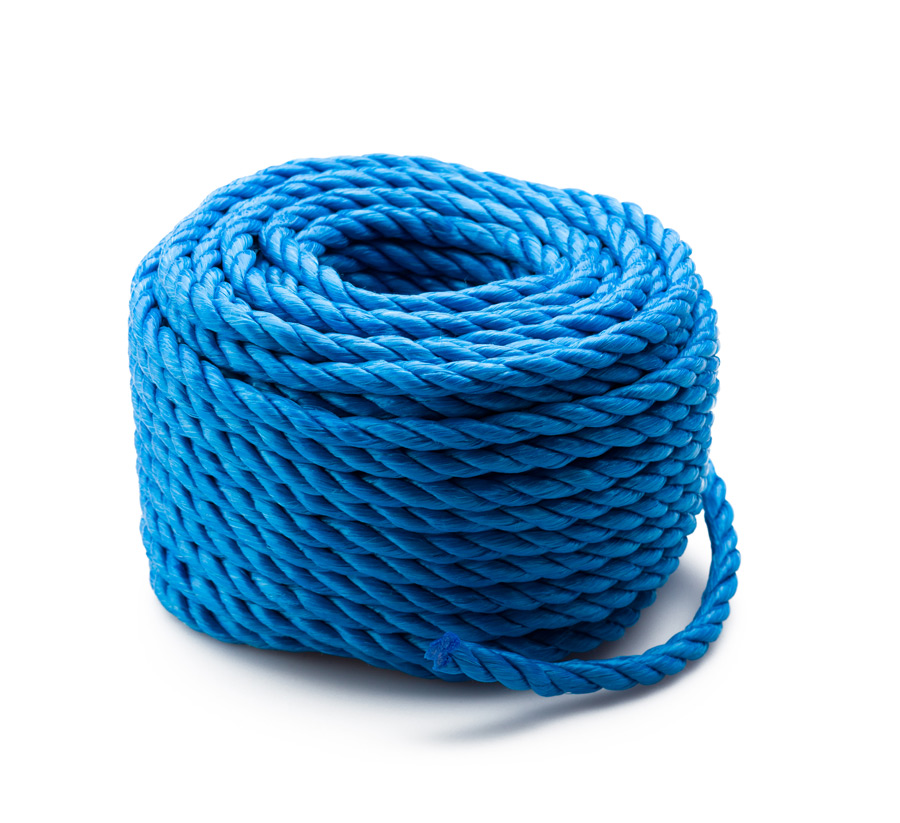
By contrast, pull tapes are typically made from materials like polyester or aramid which have much lower friction and higher thermal resistance than polypropylene rope. This means they can withstand longer, higher-tension pulls without fusing with a conduit, or burning through a pathway – even in routes with multiple directional changes and vertical sweeps.
2. It’s safer than traditional pull rope
When made into yarn, polypropylene has an elongation factor at break of 50 to 100% under tensile load – in other words, it can stretch up to twice its original length. Yarns with high elongation can store tensile energy, which is subsequently released in surges during pulling, and violently upon breaking. This has two potentially dangerous consequences for cable installers:
- It can be difficult to maintain controlled, even tension throughout the pull, resulting in cable damage.
- More importantly, the rope can snap back out of the conduit at speed if it breaks, risking serious injury to anyone standing nearby.
The elongation factor at break of polyester is 10 to 25%. For aramid, it’s around 4%. Tapes made of these materials, which are woven into a flat structure, spread the tensile load over a greater surface area than round, braided ropes – affording much greater control during pulling and lower risk of cable damage. Moreover, because the mass of the tape per unit length is lower than a rope with equivalent tensile strength, an installer is far less likely to be injured should that tape break because it will do so with far less energy.
3. It can be supplied pre-installed in your conduit
While a reel of good quality pull tape is something every fiber installer and electrician should have in their truck, in many cases it can stay packed away for emergencies only. That’s because pull tape can be factory-installed in a variety of conduit types during the extrusion process.
Often, one contractor will be responsible for installing the pathway and inserting the pull tape, ready for another contractor to pull in the fiber or power cable later. Conduit with pre-installed pull tape enables one-step installation for faster, more cost-effective projects. With the duct in place, all the installer must do is tie the individual lengths of tape using a quality knotting method like Dura-Line’s Bull-Knot for maximum strength retention, then couple the conduit.
Be aware, though, that when tape is knotted – as is necessary to attach it to a pulling eye, swivel, or another piece of tape – this break strength is reduced, depending on knot efficiency. The published strength rating of a pull tape is based on a knot-free scenario, so good practice for specifying the right tape is to:
- Take the highest tensile strength of the cable(s) you expect to install, e.g., 600 lb. (270 kg)
- Double it, i.e., 1,200 lb (540 kg)
- Choose the next tape strength up, i.e., 1,250 lb. (567 kg)
Note, also, that pull tapes are specifically designed and rated for underground use and are not safety rated for overhead service.
4. It’s made to measure
Question: When is a pull tape not a pull tape?
Answer: When it’s a measuring device!
Beyond the mechanical benefits, the flat woven structure of pull tape accommodates a durable print line containing information like the name of the infrastructure owner and distance markings in feet or meters. This is useful for:
- Pre-rodding the tape into a conduit to determine the total installation distance.
- Accurately measuring the amount of cable needed, including any slack.
- Monitoring the approximate completed distance during pulling – keeping in mind tape can stretch during pulling.
Excellence in pull tape for over 40 years
Back in 1981, Dura-Line became the first manufacturer of fiber-optic conduit with pre-installed pull tape. Today, our Bull-Line® Pull Tape brand is synonymous with strength and safety, with all products made in-house at dedicated tape manufacturing facilities in the United States.

